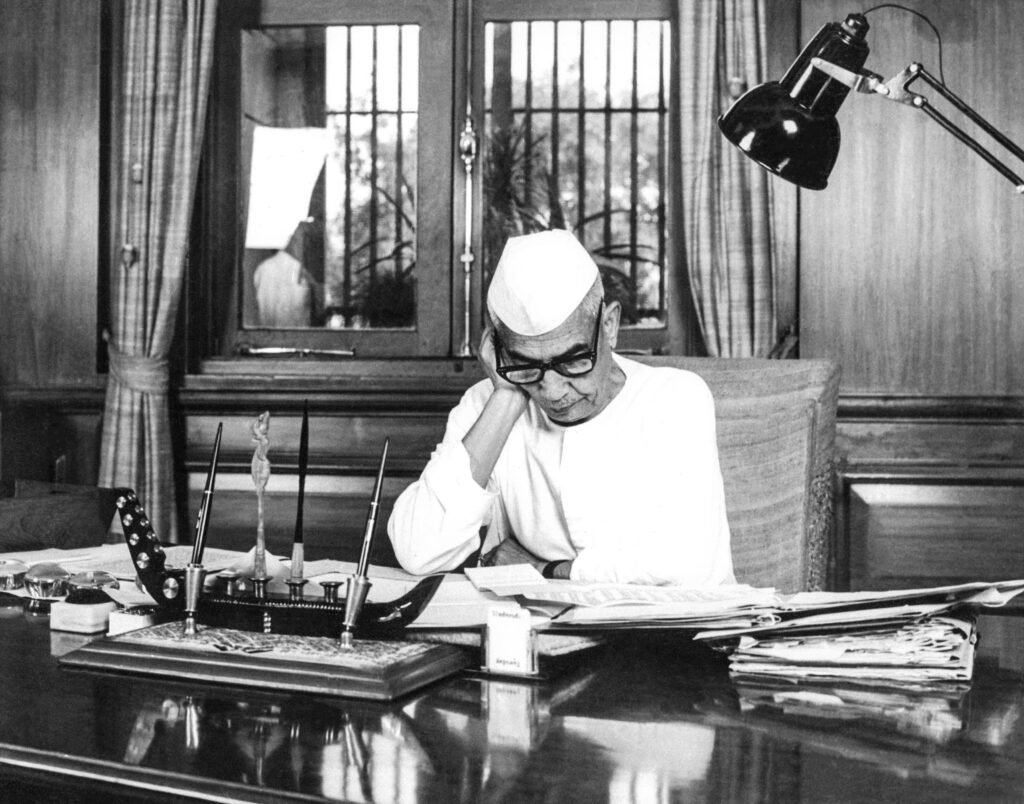Introduction
Mihirakula, a pivotal figure in the history of the Indian subcontinent during the early 6th century CE, was a ruler of the Alchon Huns whose reign (circa 502–530 CE) left a lasting, albeit controversial, mark on regions such as Punjab, Gandhara, and Kashmir. As the son of Toramana, the first major Alchon Hun king to establish dominance in India, Mihirakula inherited a nascent empire that capitalized on the decline of the Gupta Empire. His rule is documented in various sources, including inscriptions like the Gwalior Inscription, Chinese Buddhist travelogues by Song Yun and Xuanzang, and the 12th-century Kashmiri chronicle Rajatarangini by Kalhana. These texts, alongside archaeological evidence, paint a complex picture of a ruler described as both a tyrant and a patron of Shaivism.
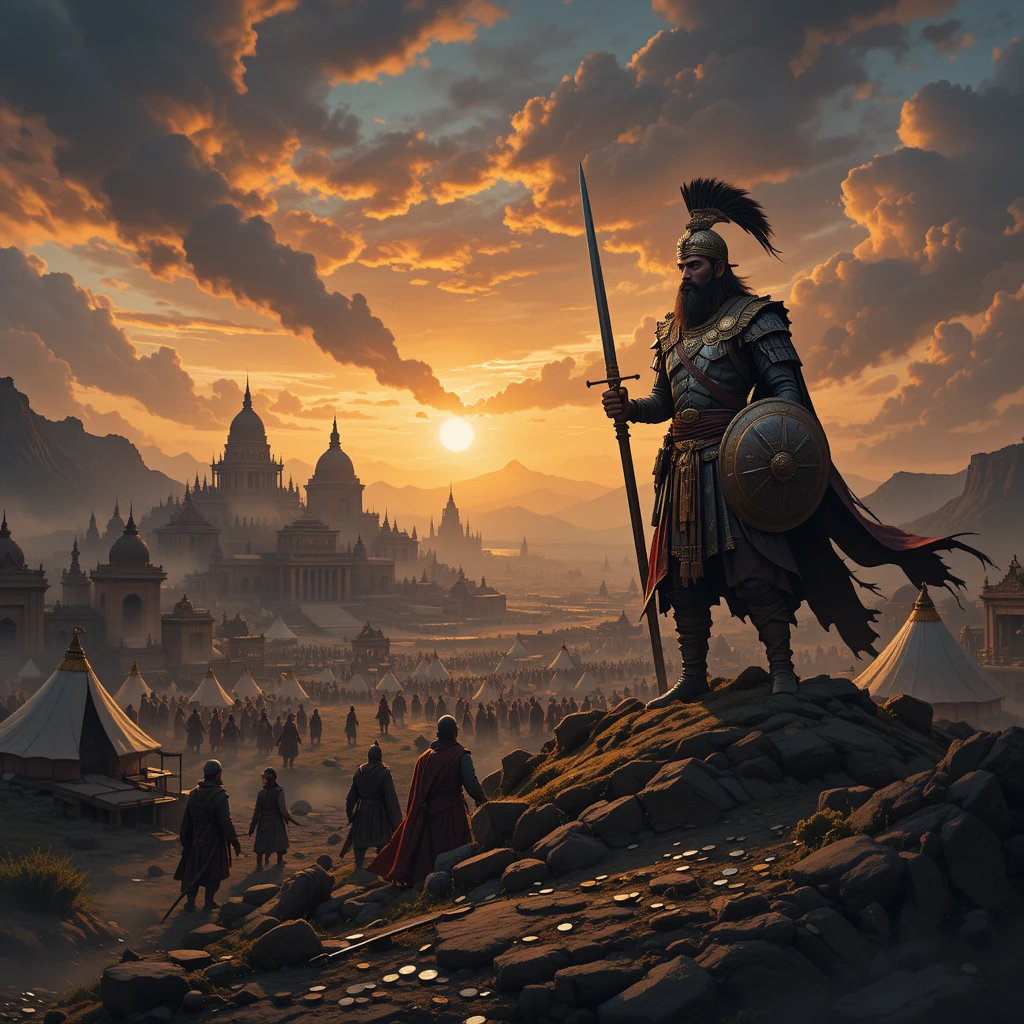
Table of Contents
This article explores Mihirakula’s origins, his entry into India, his military campaigns, his relocation to Kashmir, his actions toward the Kashmiri population (male and female), the question of whether he paid bribes or tribute, and the roles of other Huna kings. By critically analyzing primary sources—such as inscriptions, coins, and manuscripts—and secondary historical works, the narrative aims to balance the sensational accounts of Mihirakula’s cruelty with evidence of his cultural integration and political strategies. The discussion also addresses the reliability of sources like the Rajatarangini, which blends history with legend, and incorporates archaeological findings to provide a nuanced understanding of his legacy.
Origins of Mihirakula and the Alchon Huns
Ethnic and Cultural Background
Mihirakula was a member of the Alchon Huns, a nomadic group within the broader Hephthalite (or White Hun) confederation that originated in Central Asia, likely in the steppes of modern-day Mongolia or the Altai Mountains. The Alchon Huns were ethnically diverse, comprising Turkic, Mongolic, and Iranian elements, and their migrations were driven by the search for fertile lands, wealth, and political power. By the 4th century CE, they had established control over Bactria and Kabulistan, displacing earlier powers like the Kidarites and challenging the Sassanian Empire. Their arrival in the Indian subcontinent in the late 5th century coincided with the weakening of the Gupta Empire, creating a power vacuum that facilitated their expansion.
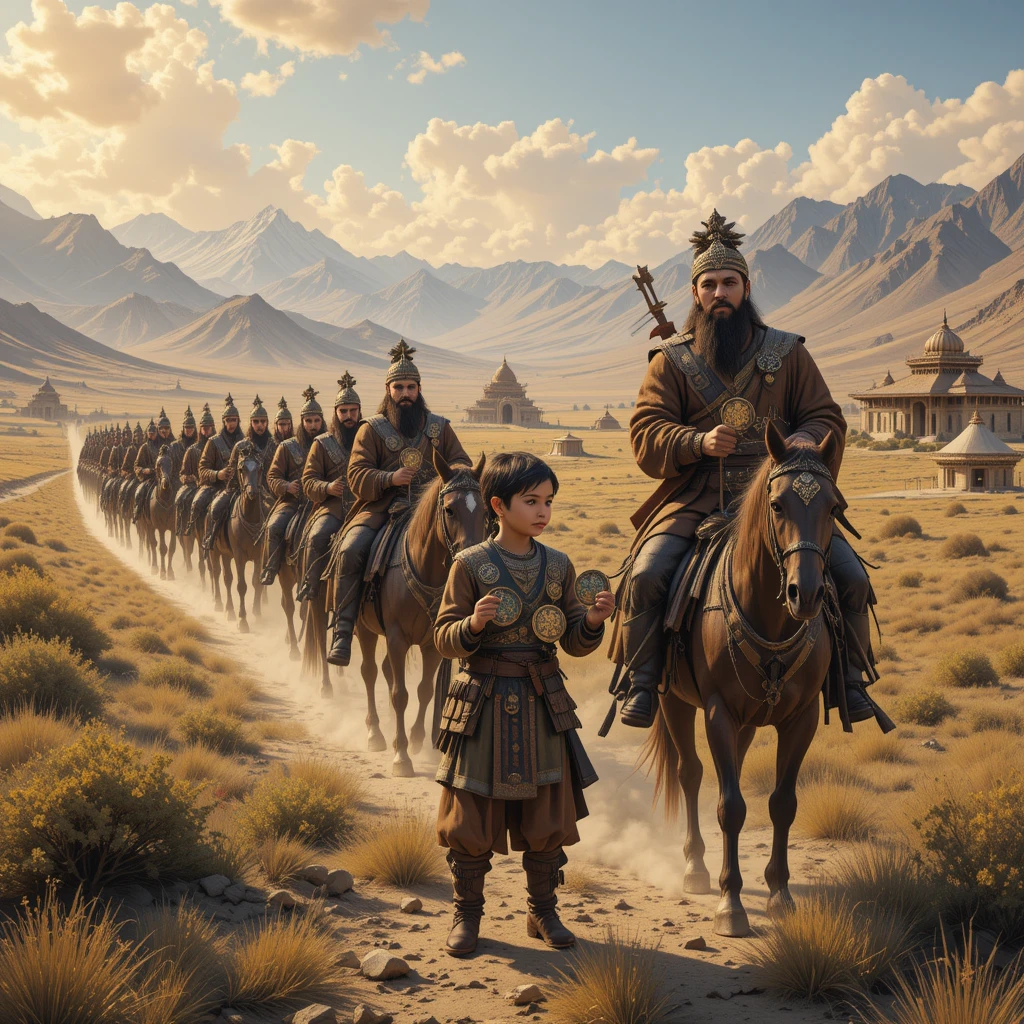
The name “Mihirakula” is of Iranian origin, likely meaning “Mithra’s Begotten,” derived from “Mihira” (the sun god Mithra) and “kula” (clan or family in Sanskrit). This etymology reflects a blend of Central Asian and Indian cultural influences, a hallmark of Alchon Hun rulers. Mihirakula’s coinage, found in regions like Punjab and Gandhara, often features Shaivite symbols such as the bull Nandi, indicating his patronage of Hinduism, particularly Shaivism. Archaeological evidence, including coins with elongated skull motifs—a Hunnic practice of cranial deformation—further confirms their nomadic heritage and adaptation to Indian traditions.
Lineage and Early Context
Mihirakula was the son of Toramana, a key figure in the Alchon Hun conquests of India. Toramana’s reign (circa 490–515 CE) marked the initial wave of Hunnic expansion into northwestern India, with his control extending over Punjab, Malwa, Gujarat, and parts of Uttar Pradesh. The Eran Stone Boar Inscription, dated to Toramana’s first regnal year (circa 510 CE), found in Madhya Pradesh, honors the deity Vishnu as Varaha and attests to his dominion over eastern Malwa. This inscription, carved in Sanskrit on a stone pillar, highlights Toramana’s adoption of Indian religious and administrative practices. Another key source, the Kausambi Seals, suggests that Toramana sacked this Gupta stronghold between 497 and 500 CE, consolidating Hunnic power in central India.
Mihirakula likely grew up in this environment of conquest and cultural synthesis, participating in his father’s campaigns before succeeding him around 502 CE. The Gwalior Inscription, issued in Mihirakula’s 15th regnal year (circa 515–516 CE), confirms his lineage, describing him as the son of Toramana, “a lord of the earth” whose fame was widespread. This inscription, found in Madhya Pradesh, records the construction of a Surya (sun) temple, underscoring Mihirakula’s role as a patron of Hindu traditions.
The Alchon Huns’ broader history reveals a pattern of conquest and adaptation. Originating in Bactria around 370 CE, they clashed with the Sassanians and, under leaders like Khingila (circa 430–490 CE), controlled key trade routes across the Hindu Kush. The Talagan Copper Scroll (492/493 CE) documents early Alchon rulers as donors to Buddhist stupas, indicating a complex relationship with local religions despite later accusations of anti-Buddhist persecution.
Arrival in India
Context of Hunnic Invasions
The Alchon Huns’ entry into India was part of a broader wave of nomadic migrations triggered by the decline of the Gupta Empire, which had dominated northern India since the 4th century CE. Under rulers like Skandagupta, the Guptas faced internal rebellions and external pressures, weakening their hold over northwestern territories. Toramana capitalized on this vulnerability, leading the First Hunnic War (496–515 CE) and establishing control over regions like Punjab, Malwa, and parts of Gujarat. Mihirakula’s arrival in India likely occurred during these campaigns, either as a young prince or as Toramana’s successor following his father’s death around 502 CE.
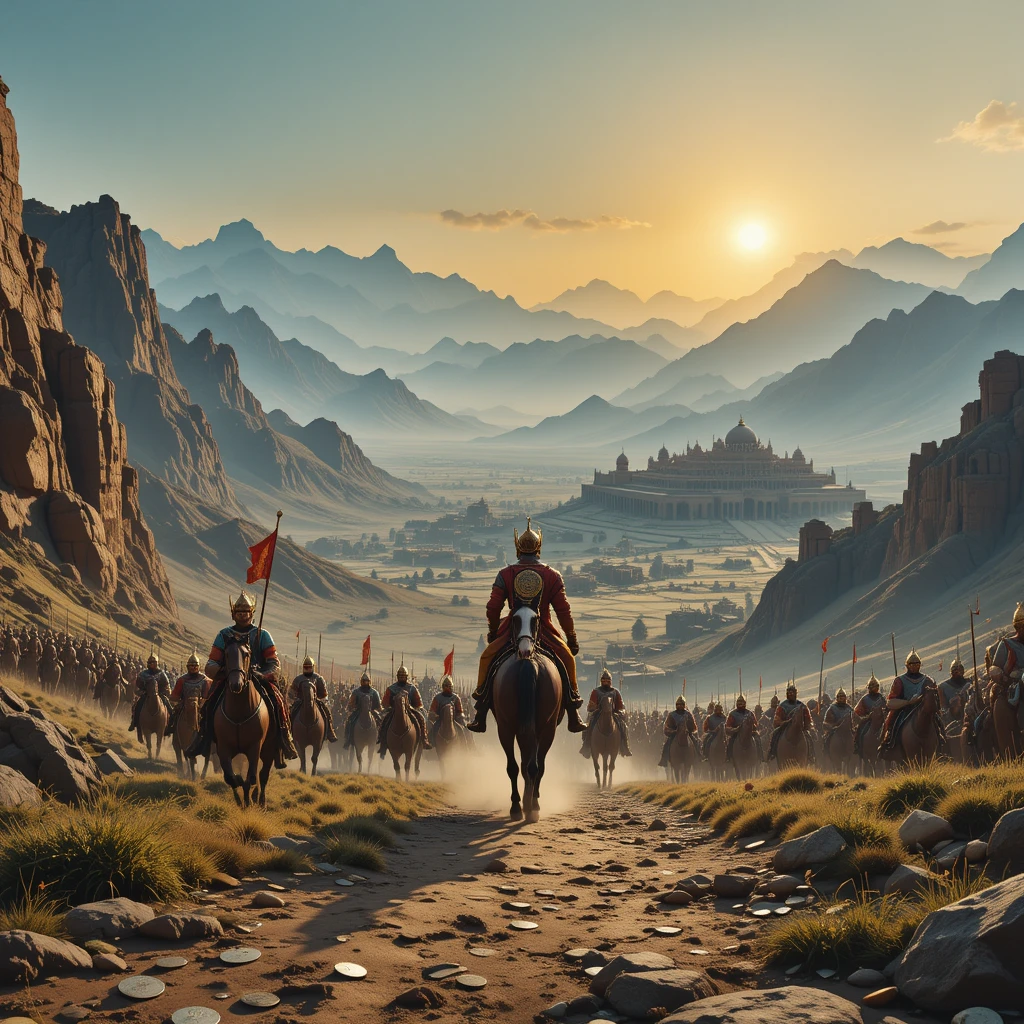
The Hunnic capital at Sagala (modern Sialkot, Pakistan) served as the administrative and military hub for their Indian territories. Mihirakula’s early rule focused on consolidating his father’s conquests, particularly in Punjab and Gandhara. The Gwalior Inscription provides evidence of his authority in central India, while Chinese sources, such as the travelogue of Song Yun (who met Mihirakula around 520 CE), describe him as a powerful king who initially rejected religion but later embraced Shaivism.
Motivations for Expansion
The Huns’ migration into India was driven by economic, political, and strategic factors. The fertile plains of the Indus and Ganges offered resources unavailable in the Central Asian steppes, while control over trade routes, such as those through Gandhara, promised wealth. Politically, the Guptas’ decline provided an opportunity to establish a new empire. Mihirakula’s motivations were likely a continuation of Toramana’s ambitions: to expand Hunnic influence, secure tribute from local rulers, and integrate into the Indian socio-religious framework to legitimize his rule. His patronage of Shaivism, as seen in his coins and inscriptions, reflects this strategy of cultural assimilation.
Military Campaigns and Conflicts
Conquests and Battles
Mihirakula’s reign was marked by aggressive military campaigns that extended Hunnic control across northwestern and central India. The Rajatarangini describes him as a ruler of “violent acts” who led campaigns causing widespread destruction. His leadership in the Second Hunnic War (circa 520 CE) saw him conquer regions as far east as Pataliputra (modern Patna) and south to Sindh, employing a large army with elephants and cavalry. The Gwalior Inscription attests to his authority in central India, while the Manjusri-mula-kalpa, a Buddhist text, references his conquests in regions like Magadha.
Mihirakula’s most significant conflicts were with Indian rulers resisting Hunnic expansion. Around 525–528 CE, he faced a coalition led by Gupta king Narasimhagupta Baladitya and Yashodharman of the Aulikara dynasty. According to Xuanzang’s Records of the Western Regions (7th century CE), Mihirakula was captured by Baladitya during a campaign in Magadha but was spared execution due to the intervention of Baladitya’s mother. The decisive Battle of Sondani (circa 528 CE), recorded in the Mandasor Pillar Inscriptions, saw Yashodharman defeat Mihirakula, forcing him to pay tribute and submit. These inscriptions, found in Mandsaur, Madhya Pradesh, boast of Yashodharman’s victory, marking a turning point in Hunnic dominance.
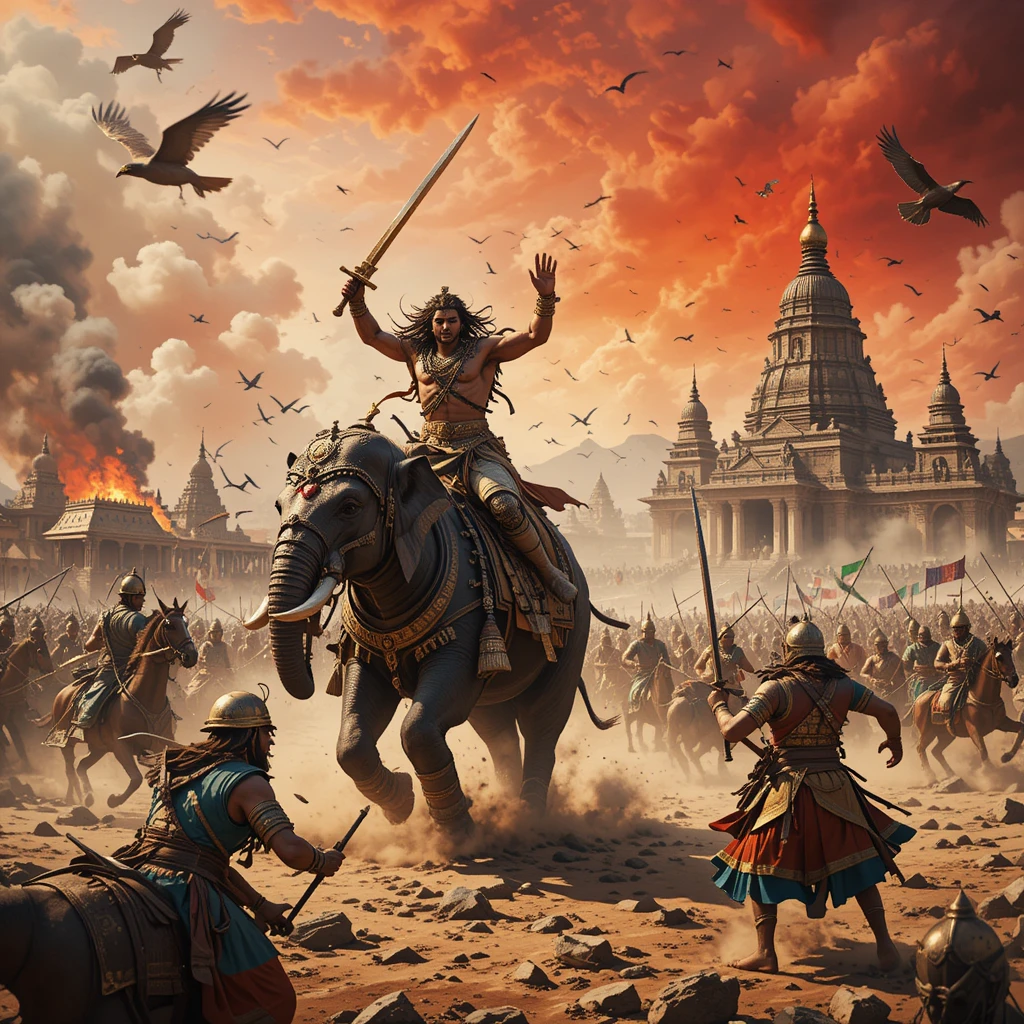
Mihirakula also attempted to regain control over Bactria, a former Hunnic stronghold, but his efforts were curtailed by the combined resistance of Indian rulers and possibly Sassanian forces. The Rajatarangini claims he invaded distant regions like Chola and Karnata, causing local rulers to flee, and even led an expedition to Sinhala (Sri Lanka), where he replaced the king. However, these accounts, particularly the Sri Lankan campaign, lack corroboration from other sources and may reflect Kalhana’s tendency to embellish.
Alleged Persecution of Buddhists
Mihirakula’s reputation as a persecutor of Buddhists stems primarily from Chinese Buddhist sources. Xuanzang claims he demolished 1,600 Buddhist stupas and monasteries and killed thousands of monks and laypeople. Song Yun, who visited Mihirakula’s court around 520 CE, describes him as a ruler who initially rejected religion but later adopted Shaivism. The Rajatarangini reinforces this image, portraying him as a tyrant who “resembled kala (death)” and caused widespread suffering.
However, modern scholars, such as Upinder Singh and Jason Neelis, argue that these accounts may exaggerate Mihirakula’s anti-Buddhist actions. Political conflicts with Buddhist institutions, which often held significant economic and social power, may have been recast as religious persecution. Archaeological evidence from sites like Taxila and Harwan in Kashmir shows continued Buddhist activity during and after Mihirakula’s reign. For example, Xuanzang himself noted the presence of hundreds of monks and major stupas in Gandhara and Udyana, suggesting that Buddhism was not eradicated. The Talagan Copper Scroll further indicates that earlier Alchon rulers, like Khingila, supported Buddhist institutions, complicating the narrative of Hunnic hostility toward Buddhism.
Evaluating Claims of Violence
The Rajatarangini contains sensational claims, such as Mihirakula killing “three crore” (30 million) people, including women of high birth, during a test involving moving a stone. Such figures are hyperbolic, as they exceed the likely population of the regions he ruled and lack corroboration from inscriptions or archaeology. No mass destruction layers corresponding to his reign have been found, and the survival of Buddhist sites suggests that his campaigns, while destructive, did not cause the catastrophic collapse described in texts. These exaggerations likely reflect the literary style of Kalhana and the biases of Buddhist chroniclers, who sought to vilify a ruler who challenged their influence.
Relocation to Kashmir
Circumstances of the Move
Mihirakula’s relocation to Kashmir followed his defeat in the Battle of Sondani and capture by Baladitya around 528–530 CE. According to Xuanzang, after his release from imprisonment in Magadha—possibly due to diplomatic negotiations or tribute—he found his capital at Sagala usurped by an associate. With his power base in Punjab weakened, Mihirakula sought refuge in Kashmir, where the local king granted him territory, likely in the region of Lohara or a peripheral area.
Several factors likely influenced this move:
- Strategic Retreat: Kashmir’s Himalayan defenses offered protection from Gupta and Aulikara forces, making it an ideal refuge.
- Local Alliances: The Kashmiri king may have seen Mihirakula’s military expertise as a means to bolster regional defenses against external threats.
- Cultural Affinity: Mihirakula’s devotion to Shaivism aligned with Kashmir’s strong Shaivite tradition, facilitating his acceptance.
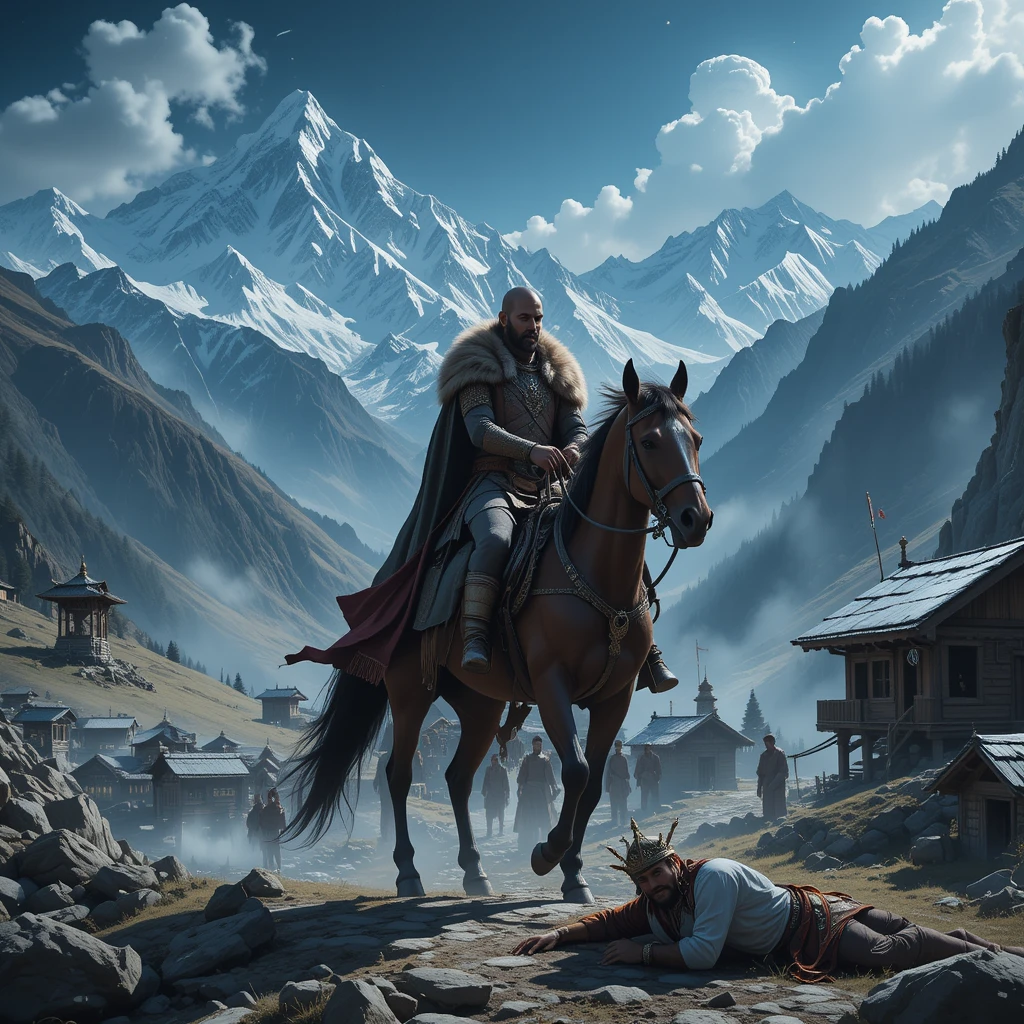
Actions in Kashmir
Once in Kashmir, Mihirakula’s ambitions resurfaced. The Rajatarangini narrates that he betrayed the Kashmiri king who sheltered him, assassinating him and usurping the throne. He then launched a surprise attack on Gandhara, killing its ruler and massacring ministers, thereby annexing the region. These actions allowed him to establish a new power base, albeit temporarily, in Kashmir and parts of Gandhara.
Kalhana portrays Mihirakula’s rule in Kashmir as oppressive, marked by heavy taxation and destruction. He is said to have founded the Mihiresvara shrine, dedicated to Shiva, and established the town of Mihirapura, reflecting his continued patronage of Shaivism. The Rajatarangini also claims he settled Brahmins from Gandhara and granted them agraharas (land endowments), suggesting an attempt to secure support from local elites. However, his fiscal policies, including exactions on Brahmins, led to protests, and his reign was characterized by unrest.
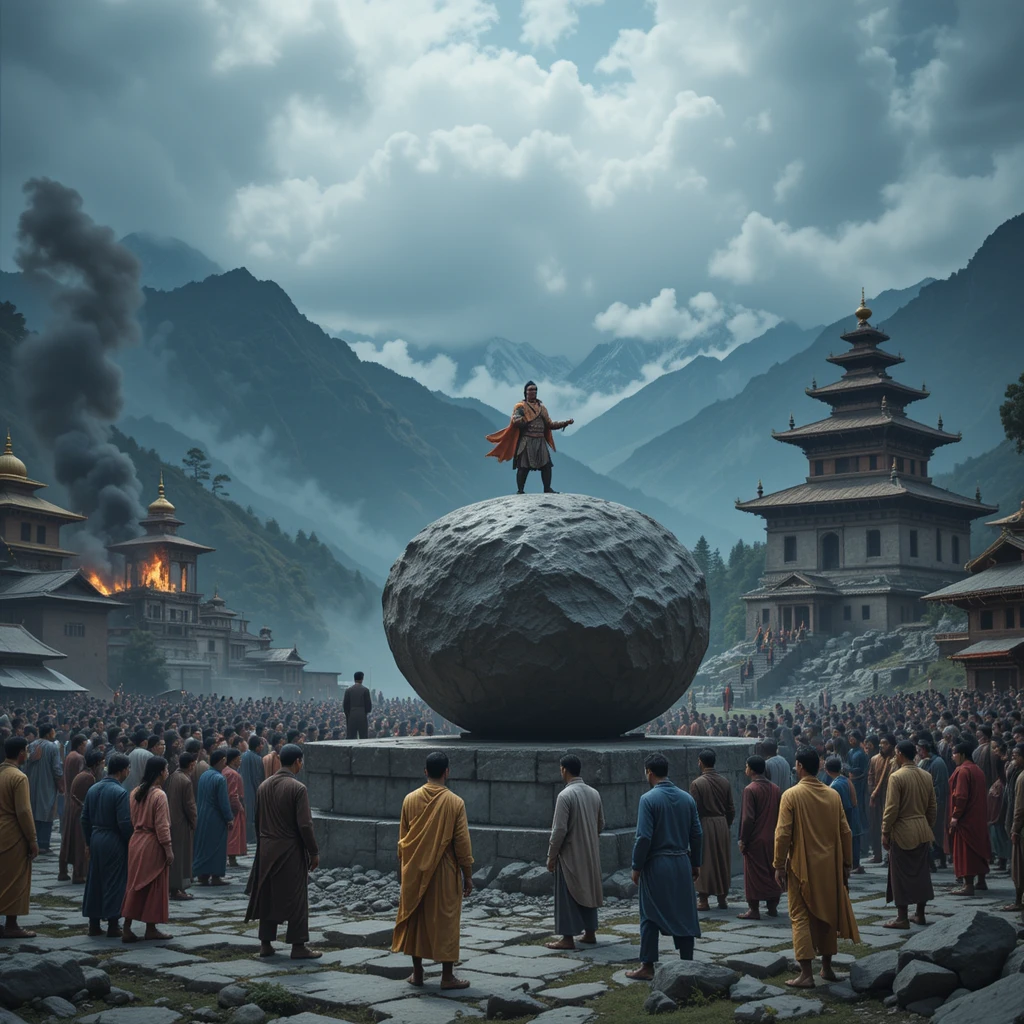
Treatment of Kashmiri Men and Women
The Rajatarangini provides dramatic accounts of Mihirakula’s cruelty, including a claim that he massacred “three crore women of high birth” along with their husbands, sons, and brothers during a test where those unable to move a stone were executed. Another incident describes him killing 100 elephants on the Pir Panjal pass, showing no mercy to animals or humans, including women, children, and the elderly. These narratives suggest widespread violence but lack specificity regarding gendered targeting.
Such claims are almost certainly exaggerated, as the figure of 30 million exceeds plausible population estimates for the region, and no archaeological evidence supports mass killings on this scale. The emphasis on women of high birth may reflect Kalhana’s literary style, which often uses dramatic imagery to underscore a ruler’s moral failings. Xuanzang’s account similarly notes Mihirakula’s destruction of Buddhist sites in Kashmir, but archaeological surveys of sites like Harwan monastery indicate continued Buddhist activity, suggesting that his impact was not as devastating as claimed.
While Mihirakula’s campaigns likely involved violence against both men and women, as was common in ancient warfare, there is no direct evidence of disproportionate targeting of women beyond the Rajatarangini’s hyperbolic narrative. His actions appear to have been driven by political and military objectives, such as consolidating power and suppressing opposition, rather than specific gendered violence.
Payments, Bribes, or Tribute
No primary sources explicitly confirm that Mihirakula paid bribes to secure his position in Kashmir. However, the Mandasor Pillar Inscriptions suggest that he was forced to pay tribute to Yashodharman after his defeat at Sondani, indicating that financial or diplomatic concessions were part of his negotiations for survival. In Kashmir, his usurpation of power through assassination and military force, as described in the Rajatarangini, suggests reliance on coercion rather than bribes. Xuanzang’s account mentions no payments, focusing instead on Mihirakula’s conflicts with Buddhist institutions, which may have been motivated by their refusal to offer him tribute or respect.
Other Alchon Hun Kings
The Alchon Huns produced several rulers who shaped their presence in India and Central Asia. Below is a list of key figures, based on inscriptions, coins, and textual sources:
- Khingila (circa 430–490 CE): An early Alchon leader, Khingila controlled trade routes across the Hindu Kush and is mentioned in the Talagan Copper Scroll as a donor to Buddhist stupas. His coins, featuring solar symbols, reflect early Hunnic integration into Indian traditions.
- Mehama (circa 461–493 CE): A governor under the Sassanians, Mehama allied against the Kidarites and achieved autonomy. He is also named in the Talagan Copper Scroll as a stupa donor.
- Javukha (circa 492/493 CE): Another early ruler, mentioned in the Talagan Copper Scroll for contributions to Buddhist institutions, though his reign is less documented.
- Toramana (circa 490–515 CE): Mihirakula’s father, Toramana expanded Hunnic control into Punjab, Malwa, and Gujarat. The Eran Stone Boar Inscription and Sanchi Inscription document his conquests and religious patronage, including support for Jainism and Shaivism.
- Lakhana Udayaditya (late 5th century CE): A lesser-known ruler mentioned in inscriptions, likely governing a regional territory under Toramana or Mihirakula.
- Sri Pravarasena (circa 530–590 CE): A later ruler who governed Gandhara and Kashmir after Mihirakula, founding the city of Pravarapura, according to the Rajatarangini.
These rulers are known from archaeological sources like coins and inscriptions, as well as texts like the Manjusri-mula-kalpa and Schøyen Copper Scroll, which highlight their roles in conquest and religious patronage.
Mihirakula’s Legacy and Death
Mihirakula’s legacy is multifaceted, reflecting both his destructive campaigns and his contributions to Shaivism. His reign accelerated the decline of urban centers in northern India, as noted by historians like Romila Thapar, but also fostered cultural syncretism through Hunnic adoption of Indian art and religion. His coinage, blending Gupta and Sasanian styles, and his construction of temples like Mihiresvara in Kashmir, underscore this integration.
According to the Rajatarangini, Mihirakula died around 544–550 CE, afflicted by diseases and committing self-immolation as an act of atonement. A divine voice reportedly declared his salvation, a narrative element reflecting Kalhana’s blend of history and mythology. Xuanzang suggests a sudden death, possibly due to illness or assassination, following his persecution of Buddhists. The Manjusri-mula-kalpa predicts his fall due to moral failings, aligning with Buddhist critiques.
Critical Analysis of Sources
Archaeological Evidence
- Coins: Alchon Hun coins from Punjab and Gandhara, featuring Shaivite symbols like the bull, confirm Mihirakula’s patronage of Hinduism. Cranial deformation motifs highlight their nomadic origins.
- Inscriptions: The Gwalior Inscription (Surya temple), Eran Stone Boar Inscription (Vishnu), Mandasor Pillar Inscriptions (defeat), and Talagan Copper Scroll (Buddhist donations) provide primary evidence of Hunnic rule and activities.
- Sites: Archaeological surveys at Taxila, Harwan, and other Gandharan sites show continued Buddhist activity, challenging claims of widespread destruction.
Textual Sources
- Rajatarangini: Kalhana’s 12th-century chronicle, preserved in Śāradā manuscripts, is the primary source for Mihirakula’s Kashmir phase. Its early books contain chronological errors (e.g., placing Mihirakula at 735 BCE) and blend history with legend, requiring cautious interpretation.
- Chinese Travelogues: Song Yun (circa 520 CE) and Xuanzang (629–645 CE) provide contemporary accounts but are biased toward Buddhist perspectives, exaggerating Mihirakula’s anti-Buddhist actions.
- Other Texts: The Manjusri-mula-kalpa and Nilamatapurana offer supplementary context, though they lack specific details about Mihirakula. Romila Thapar’s A History of India provides a modern analytical framework for understanding his role in the post-Gupta era.
Manuscripts
The Rajatarangini was preserved in Śāradā manuscripts, with M.A. Stein’s 1892 critical edition based on the codex archetypus. Other manuscripts, such as those of the Nilamatapurana, provide cultural context for Kashmir but do not directly reference Mihirakula. The scarcity of contemporary manuscripts limits direct evidence, as many were lost over time.
Source Reliability
The Rajatarangini’s early books are less reliable due to chronological inaccuracies and a literary style that prioritizes moral narratives. Buddhist sources like Xuanzang’s travelogue reflect sectarian biases, while inscriptions offer more factual but limited insights. Archaeological evidence provides a counterbalance, showing continuity in religious practices despite textual claims of destruction.
Conclusion
Mihirakula’s reign encapsulates the complexities of the post-Gupta era, marked by nomadic conquests, cultural integration, and political upheaval. As an Alchon Hun king, he expanded his father’s empire, faced significant defeats, and sought a new base in Kashmir through treachery and force. His alleged cruelty, particularly toward Buddhists and the Kashmiri population, is likely exaggerated, as archaeological evidence suggests continuity in religious and urban life. His patronage of Shaivism, evidenced by inscriptions and coins, highlights his efforts to legitimize his rule. Other Huna kings, like Toramana and Khingila, laid the foundation for his campaigns, but their collective legacy faded after Mihirakula’s defeats.
By synthesizing inscriptions, archaeological findings, and textual sources, this article offers a nuanced view of Mihirakula, challenging the traditional narrative of a mere tyrant. His story reflects the dynamic interplay of nomadic and sedentary cultures in ancient India, leaving a legacy that continues to intrigue historians.
References
- Thapar, Romila. A History of India, Volume 1. Penguin Books, 1990.
- Singh, Upinder. A History of Ancient and Early Medieval India: From the Stone Age to the 12th Century. Pearson, 2008.
- Neelis, Jason. Early Buddhist Transmission and Trade Networks: Mobility and Exchange within and beyond the Northwestern Borderlands of South Asia. Brill, 2010.
- Stein, M.A. Kalhana’s Rajatarangini: A Chronicle of the Kings of Kashmir. Motilal Banarsidass, 1900.
- Beal, Samuel. Si-Yu-Ki: Buddhist Records of the Western World by Hiuen Tsiang (Xuanzang). Kegan Paul, 188 outing, 1884.
- Watters, Thomas. On Yuan Chwang’s Travels in India, 629–645 A.D.. Royal Asiatic Society, 1904.
- Manjusri-mula-kalpa. Edited by T. Ganapati Shastri, Trivandrum Sanskrit Series, 1920.
- Nilamatapurana. Edited by K. de Vreese, Leiden, 1936.

